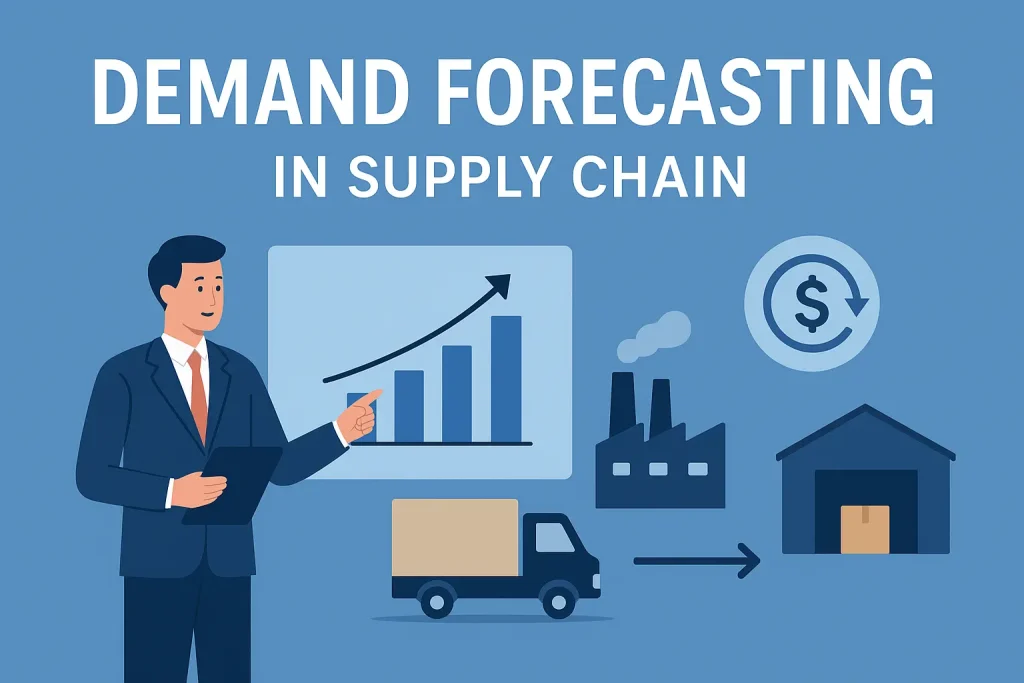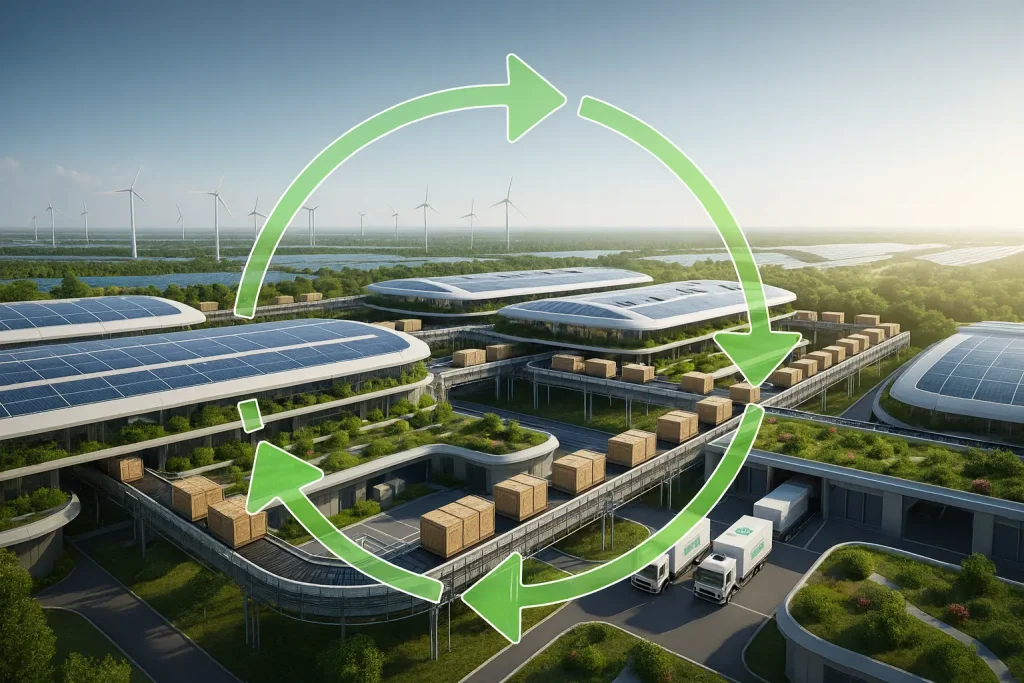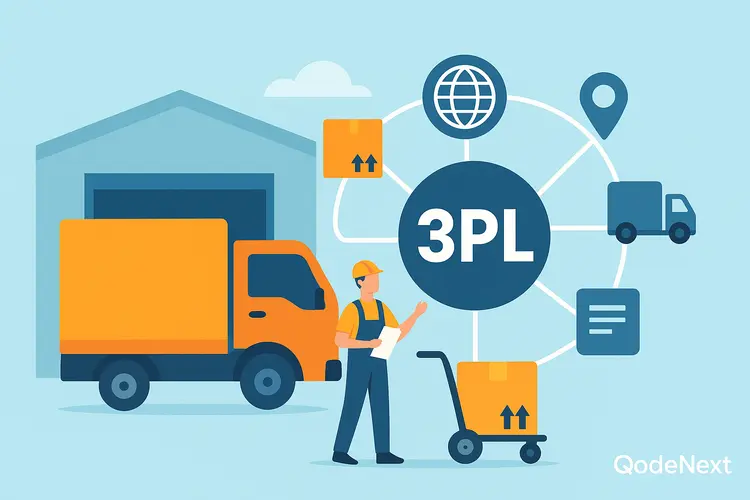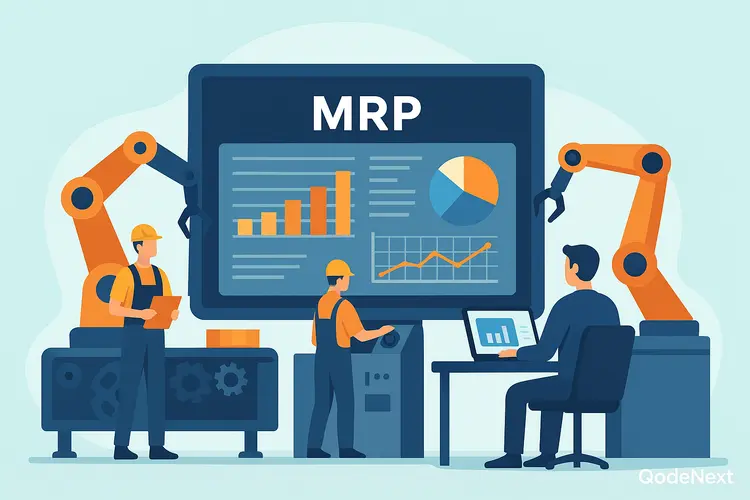In today’s unpredictable market, accuracy in forecasting determines whether a business thrives or struggles. Every efficient operation — from procurement to delivery — starts with understanding what customers will need tomorrow. Accurate demand forecasting in supplychain operations ensures that companies can meet this demand without overproducing or running short.
When forecasts are off, the consequences can ripple across the organization. Overstocked warehouses, production delays, and unfulfilled orders are all symptoms of poor forecasting. To avoid this, companies are now using data analytics, collaboration, and automation to make forecasting more reliable. The result is a smarter supplychain that operates with precision, balance, and agility.
Just as demand planning vs supply planning helps maintain operational alignment, forecasting accuracy brings discipline and predictability to every part of the supplychain.
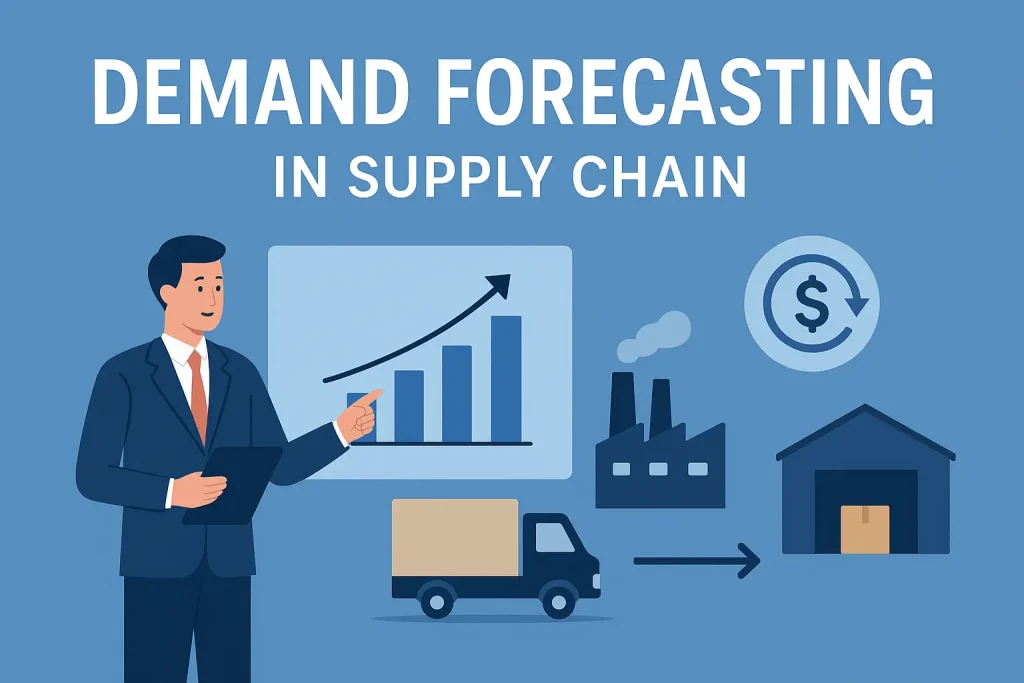
What Is Demand Forecasting in Supplychain
Demand forecasting in supplychain refers to the use of historical data, market insights, and analytics to predict future customer demand. It connects every stage of the value chain — from production and sourcing to logistics and distribution.
A manufacturing company, for example, uses forecasting to plan how many components to order and when to schedule production. Without accurate data, it risks producing too much or too little, leading to inefficiency and wasted resources.
Accurate forecasting gives businesses a clear picture of upcoming demand, allowing them to align supply, control costs, and maintain consistent customer satisfaction. It is not just a data exercise but a strategic capability that drives better decision-making.
Why Forecast Accuracy Matters
Forecasting accuracy impacts nearly every aspect of operations. With precise demand forecasting in supplychain, companies can manage inventory efficiently, reduce costs, and plan production based on realistic demand. When data is consistent and reliable, teams can make faster, better-informed decisions.
Better forecasts also strengthen sales and operations planning, ensuring all departments work toward shared goals. Production runs are scheduled more efficiently, procurement becomes proactive, and delivery times improve.
Accurate forecasting relies on clear data and continuous validation. When done well, it keeps the supplychain stable, efficient, and better connected with 3PL partners for smoother logistics and end-to-end visibility.
Common Challenges in Forecasting
Even advanced systems can face challenges when implementing demand forecasting in supplychain operations. Businesses often struggle with fragmented data, shifting market dynamics, and lack of coordination between teams.
- Data inconsistency can make it difficult to trust forecasts, especially when different departments use separate systems.
- Market volatility affects buying behavior, making past trends unreliable. Companies must update models frequently to reflect current realities.
- Limited collaboration reduces visibility across the supplychain. Without proper communication, production, and logistics teams may act on outdated forecasts.
- Manual forecasting methods leave room for human error. Modern forecasting software automates these tasks, saving time and improving accuracy.
Understanding these challenges helps businesses refine their process and strengthen their forecasting accuracy over time.
Technology’s Role in Better Forecasting
Technology has completely transformed demand forecasting in supplychain management. With digital platforms and AI-driven tools, organizations can now analyze vast datasets, identify patterns, and generate real-time insights.
- Forecasting Software for Supplychain
Modern forecasting software for supplychain systems integrate data from sales, production, and logistics into one platform. These systems provide accurate forecasts that help managers plan proactively and respond faster to market changes.
They also support scenario analysis, allowing planners to test how different market conditions might affect demand before committing resources.
- Machine Learning in Demand Forecasting
It enhances predictive accuracy by identifying complex relationships in data. It automatically adjusts forecasts as conditions change, improving performance with every new data point.
For example, a food manufacturer can use machine learning to detect seasonal patterns and adjust production schedules before demand peaks. This level of insight ensures that production, distribution, and customer service stay perfectly aligned.
Steps to Improve Forecast Accuracy
Improving demand forecasting in supplychain accuracy requires clear processes, collaboration, and continuous refinement.
Centralize Data Sources
Collect data from all business functions in one system to eliminate inconsistencies.
Enhance Collaboration
Regular sales and operations planning sessions align every department around shared forecasting goals.
Adopt Forecasting Software
Use forecasting software for supplychain that offers predictive analytics and reporting tools to enhance transparency and precision.
Implement Machine Learning
Integrate machine learning in demand forecasting to create adaptive models that update in real time.
Monitor Key Metrics
Track metrics like forecast accuracy and bias to identify gaps and continuously improve.
By focusing on collaboration and technology, companies can make forecasting a continuous improvement process rather than a one-time task.
Benefits of Accurate Forecasting
Businesses that excel in demand forecasting in supplychain management enjoy better performance across all areas of operation.
- Lower inventory costs
- Better production scheduling
- Improved supplier relationships
- Higher customer satisfaction
- More sustainable use of resources
Accurate forecasting brings visibility and control. It helps organizations respond to demand shifts quickly, reducing risk and increasing profitability. Many companies achieve this through integrated systems like ERP systems in manufacturing, which connect data, people, and processes across the entire business.
Real-World Example
A global electronics manufacturer adopted forecasting software for supplychain with built-in machine learning in demand forecasting. The system analyzed years of sales data and current market trends to predict product demand with high precision.
The company reduced excess stock by nearly 18 percent and improved on-time delivery performance. By connecting data from all departments, it created a continuous flow of insight that guided real-time decision-making.
This practical application of technology proved that accurate forecasting is not just theoretical — it delivers measurable business results.
The Future of Forecasting
The future of demand forecasting in supplychain is intelligent, automated, and interconnected. With real-time data sharing and AI-driven models, supplychains are moving toward predictive decision-making.
Soon, production lines will automatically adjust schedules based on live demand signals. This shift reflects the evolution of ERP systems in manufacturing, where planning, production, and reporting operate seamlessly as one.
In the coming years, forecasting will no longer be about anticipating change — it will be about responding to it instantly.
Conclusion
Accurate demand forecasting in supplychain operations is the foundation of efficiency and profitability. It enables businesses to stay resilient, minimize waste, and deliver value to customers consistently.
By improving collaboration through sales and operations planning, adopting forecasting software for supplychain, and leveraging machine learning in demand forecasting, companies can transform their supplychains into adaptive, intelligent networks.
Forecasting is not just about predicting numbers — it is about building a smarter, more responsive future for manufacturing and logistics.
FAQs (Frequently Asked Questions)
What is demand forecasting in supplychain management?
It is the process of predicting customer demand using data analytics and insights to guide production and logistics decisions.
How does machine learning improve forecast accuracy?
Machine learning identifies demand trends, refines forecasts, and updates predictions automatically.
Why is sales and operations planning important for forecasting?
It helps departments work together so production matches real market demand.
What are the best forecasting software tools for supplychains?
Platforms such as SAP IBP, Kinaxis, and Blue Yonder provide predictive modeling and scenario analysis.
Why is accurate demand forecasting important for businesses?
It reduces waste, improves planning efficiency, and strengthens overall supplychain performance.
